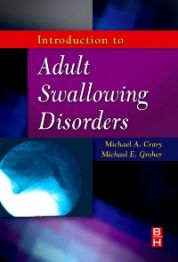This treatment-oriented guide provides a hands-on approach to the diagnosis and management of swallowing disorders. The material focuses on developing skills that lead to basic clinical decisions regarding dysphagic patients. Written for students and practitioners who are new to the field, the text begins with the anatomy and physiology of swallowing and goes on to cover the range of swallowing disorders, the clinical and laboratory examination, and treatment strategies. The authors have national reputations as leaders in this area and readers are sure to benefit from their expert clinical tips provided in the manual.
Key Features
- Provides essential coverage of the range of swallowing disorders, the clinical and laboratory examination, and treatment strategies.
- Includes expert clinical tips from the authors who are nationally recognized as leaders in the field.
- Offers a hands-on, treatment-oriented approach to the diagnosis and management of swallowing disorders.
- Pedagogical features include Take Home Notes, Case Studies, Chapter Terms, and Chapter Review Questions.
- Chapters are easily treated as separate lecture topics, making this text ideal for classroom use.
- One-of-a-kind, entry-level text provides balanced coverage of the full spectrum of knowledge needed to prepare one entering the field of dysphagia management.
Author Information
By Michael A. Crary, PhD F-ASHA, Professor, Speech-Language Pathology
Co-Director, Swallowing Research Laboratory
Department of Communication Sciences and Disorders
University of Central Florida and Michael E. Groher, PhD, Professor, Truesdail Center for Communicative Disorders, University of Redlands, Redlands, CA
1. Overview of the Problem
2. The Normal Swallow
3. Swallowing Disorders: Overview
4. Neurologic Swallowing Disorders
5. Head and Neck Cancer
6. Functional Nonobstructive Dysphagia
7. The Physical Examination
8. The Instrumental Examination
9. Overview of Treatment Options
10. Behavioral Treatment
11. Swallowing Disorders and Ethics














